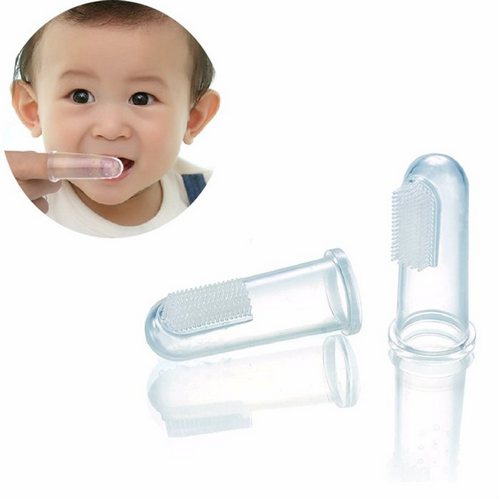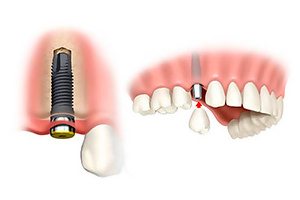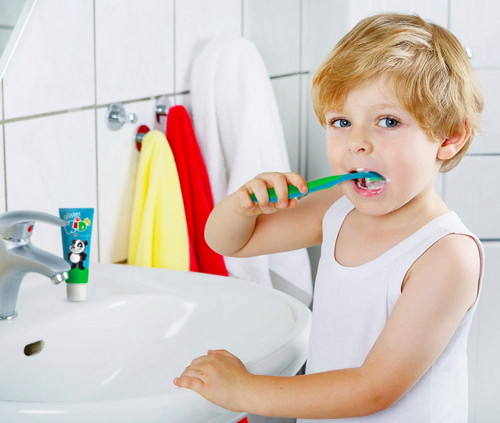There is nothing worse than a toothache… dentist. Mothers scare them a little sweet, and the kids climb into the dentist chair with tears in his eyes. Caries is a really unpleasant illness, but today it can be easily cured without tears and pain And you will not believe – even without nasty drilling!
“Caries” in translation from Latin means the decay of tooth tissues – this process is initiated by microorganisms living in our mouth. The fact that in addition to the tongue, teeth and gums in the oral cavity inhabited by a huge number of microbes – some of them are useful for our body, and some very harmful.
These tiny creatures feed on plaque formed on the teeth after each meal. Actually during the meal, they start to secrete acid, slowly eroding our teeth, forming a cavity in them, which then have to be sealed up
The stages of caries
The initial stage, or stage spots. On the tooth appear white or dark marks that do not cause pain.
Surface stage. The spot begin to form the first fracture. The pain is still there.

Average caries. In this case, the process captures not only enamel, but also the direct “filler” of the tooth – the dentin. The dentin contains nerve endings, so when its integrity is broken, the tooth can begin to respond to the sweet, cold and hot. As a rule, the average caries asymptomatic, and no one but the doctor, to detect it, alas, can not.
Deep decay. This stage means that the disease seized most of the tooth. The pain becomes severe, and to get rid of it sometimes does not help even a serious analgesics. In this case, the complaint is similar to complaints with an average caries. When such lesions tissue in the pulp (nerve) of the tooth irreversible changes occur and in most cases it is necessary to remove.
Features of caries in children
The milk teeth of kids are not saturated with mineral elements, so they are destroyed faster and easier than native. In connection with the anatomical features of children’s teeth, the carious process is very fast. Noticed the child on the tooth harmless spot – run to the doctor, before you know it, as in this place formed a hole. Children often have so-called “bottle caries” that is spreading around the tooth and exciting all surfaces.
Often when such a situation occurs break off the handle of the tooth-level caries or pulpitis develops. Baby may not always accurately articulate what exactly is the pain in his mouth, so the parents makes sense once a week to explore the oral cavity, and every six months is necessary to take your child to the dentist.
A whole grated Apple is useful – it cleans the teeth from plaque and massages the gums.
Do I need to treat?
The milk teeth erupt at the very tender age, and by 2.5-3 years they become 20. Already in 5-7 years, they begin to change the constant, which in the adult is 28-32. Grow indigenous teeth is not out of nowhere: they are laid in the early years of a child’s life and all the while “hiding” under the milk.

These “invisible” is very sensitive to injuries and various infections, so the baby teeth need to be treated simply because neglected cavities can cause damage or even loss of permanent tooth germ.
Treatment
In the initial stages of the disease the doctors carried out a plating or chemotherapy.
While silver teeth is covered with a special solution, which suspends the carious process. The main drawback of this method is the change in the enamel color to dark gray or black, so it is only suitable for milk teeth.
What’s inside?
The outside of each tooth covered with enamel is the hardest tissue in our body. Beneath it is a softer substance of the dentine, which constitutes the main thickness of the tooth. The dentin contains nerve endings, so the carious process and brings us discomfort. And finally, third, the hidden layer of the tooth – pulp, the vascular nervous bundle, which we call “nerve”. If the decay reaches the pulp, there is an excruciating pain, and then in the course are the most radical methods of treatment.
Hemotherapy was – applying to the affected tissue solutions and varnishes, which returns mineral elements in hard tissues of the tooth. The color of the enamel does not change and there are no visible marks from such treatment remains. On a more serious stages of dental caries can not do without anesthesia, “drilling”, and fillings. Cauterized is a necessary procedure in most dental procedures, especially in pediatric practice. We must not be afraid of “freezing“, and that the child, feeling the doctor’s pain would forever be scared “doctor drill” and start to hide from the parents of problems with their teeth.
Method and medication for pain relief the doctor individually, depending on General health, allergies, extent of the tooth decay and many other factors. And the child did not experience discomfort during an injection, the doctor should pre-treat the gums with special anesthetic gel.
Materials for the production of seals, a huge amount, which is required in each case decided by the doctor. The choice depends on the patient’s age, his ability and willingness to sit quietly in a chair with his mouth open and the structure of the jaws. The fact that some compositions, complete curing takes much time and dry mouth – that is, the relative immobility of the patient. It is clear that from the children makes this virtually impossible, so they often put a seal of special cement that contains fluoride (the substance provides additional prevention of caries). But fashionable light-hardened fillings are not recommended as long as the teeth roots are not fully formed, and preschoolers so they are not very good.
Unfortunately, the badly damaged front incisors is almost impossible to seal (filling will stick), so in such situations, doctors use the silver, remoterepo, and sometimes even put on baby teeth crowns.
The preparation of the child for the first visit to the dentist
- Be honest. Tell us what and how to do doctor: look at the teeth, count them, wash with water and air fulfill its direct functions.
- Don’t say the words “hurt” and “scary.” Let the child expects no discomfort – they may not be.
- Carefully choose the doctor! The doctor and the child must find a common language – a requirement for good treatment.
Prevention
How to prevent damage to the enamel?
- Food does not have to be too hot or cold. Even ice cream to children it is better to “warm up”.
- Opening bottles and cracking nuts with your teeth will inevitably injure the enamel. Saw something like that? Trogaite!
- From time to time (once a week) let your kid rinsing mouth with a decoction of plantain – this herb is excellent strengthens the teeth and gums.
- If the child has prescribed medications containing iron (it’s much destroys enamel) – choose medications in capsules. If the kid prefers the syrup – let them drink it through a straw, and then thoroughly rinse your mouth with warm water.
Prevention of dental caries
We all know that preventing disease is much easier than to treat it. The following simple rules will allow you to save their kids ‘ teeth healthy.
Careful hygiene. Teeth should be brushed twice a day: in the morning after Breakfast and night before bed.
To use the toothbrush and toothpaste have to start from the moment the first tooth. For the convenience of mothers, there are special silicone brush, put on the finger: a few movements – and the enamel is cleaned of harmful plaque. Preschoolers are suitable toothbrush with soft bristles (head size about 2 cm), and toothpastes without content abrasive substances (usually a gel).
Make sure that the diet contained a sufficient amount of solid food. For example, a whole grated Apple is useful – it is, first, cleans the teeth from plaque, and second, massaging your gums.
Visit your dentist regularly – at least twice a year, if dental problems are not, and every three months, if they exist. Remember that all the processes the child runs many times faster than an adult’s, and yesterday’s cavities tomorrow can become a flux.



